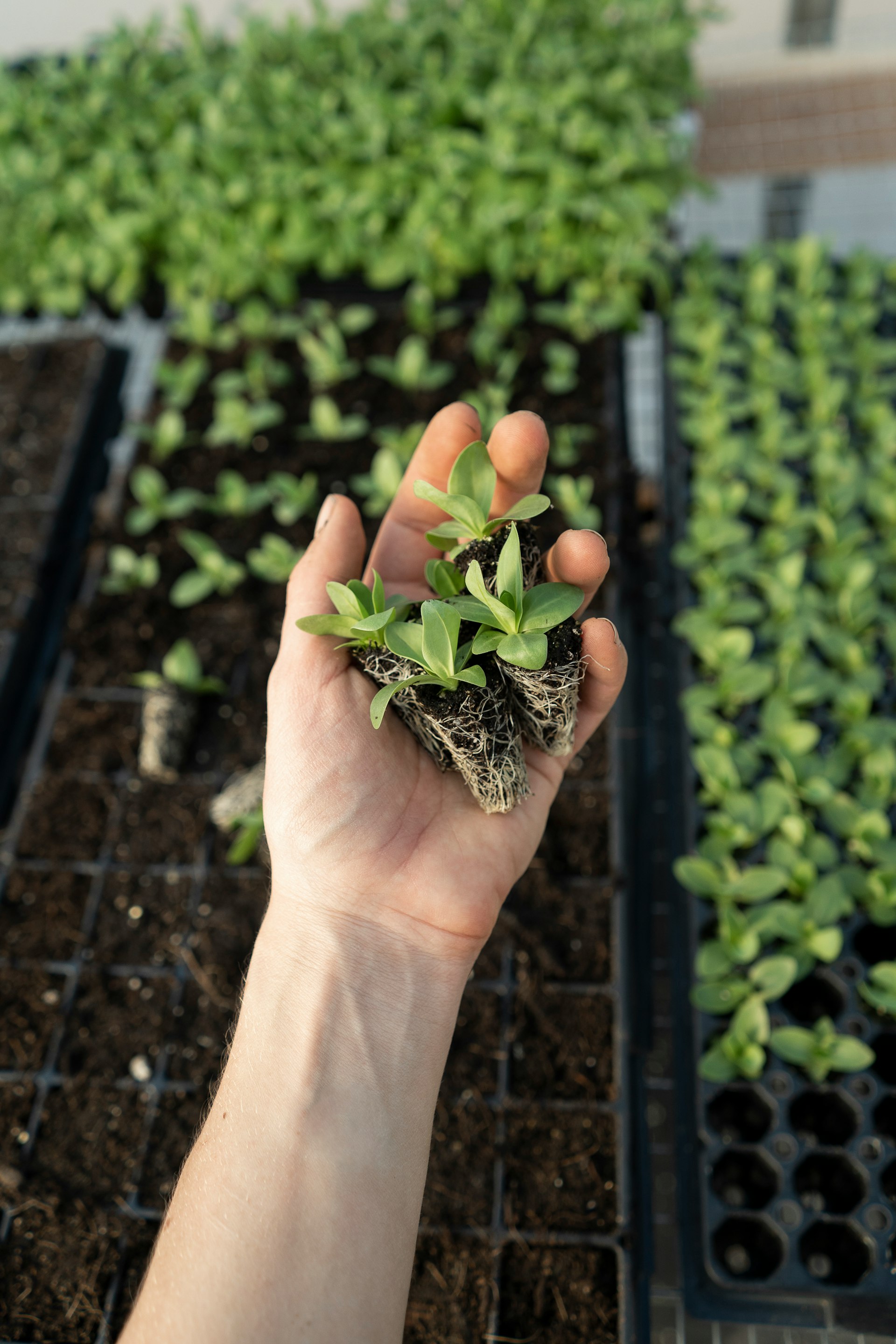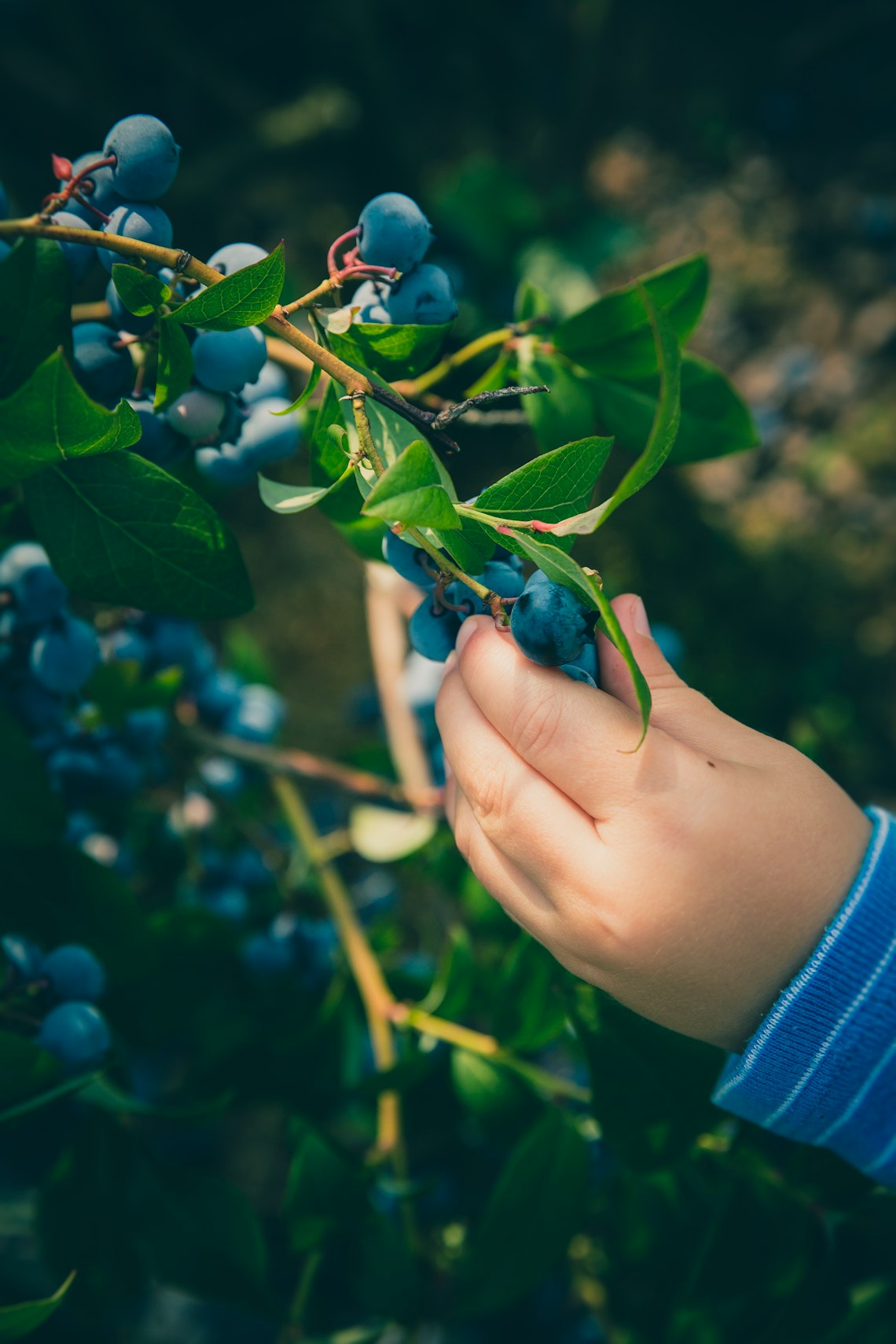Methods to increase and optimize productivity in your garden from the seed to fruit
Seedlings
Plants will react to damage or mistreatment, especially when still seedlings. Any damage caused will slow plant growth and reduce the amount of harvest.
For good seedling care, give special care to:
- Plant small seeds about 2 cm deep and larger seeds 3-4 cm deep. Don’t forget to water seedlings every day
- If planting large seeds in containers, soak the seeds first to encourage faster growth
Don’t plant too many seeds in one pot. When the seedlings grow, they will need space for root growth. If planted too close together, plants will compete. Also, many roots will break as they are separated, and this will slow plant growth
Increase the amount of sunlight seedlings receive for as long as one week before being transplanted in the garden. This technique is called ‘hardening seedlings’ and is used to prepare seedlings for stronger sunlight conditions in which they will later grow
• When planting seedlings in the garden, make sure they receive enough water
• Give special attention to plant roots. Make sure that plant roots are always facing down. Don’t leave plant roots exposed to sunlight and avoid root damage
• Don’t plant seedlings at mid day, when the sunlight is at its hottest
• Provide shade for about a week after the seedlings have been planted in the garden. A temporary shade structure can be made of anything, from legumes to woven coconut palm, or any other available material

Succession Planting
Don’t plant all of your garden plots at once. By planting 3 crops of the same vegetable at different times, you will get 3 harvests. Even though harvests will be smaller, they will be extended and provide continuously. Also, less harvest will have to be thrown out or will go rotten. You can also plant different types of vegetable, which can be harvested at different times. Every type of plant needs a different amount of time to be ready for harvesting, so crop harvests will happen at different times.
Food Calendar
A good technique for planning continuous food production is to make a food calendar.
Step 1: Make a list of all the vegetables and grains you want to grow. You can add illustrations to the list if you like
Step 2: Write down the planting times and harvest times
Step 3: Write out each month on the calendar, and list what was planted and what will be harvested each month
Step 4: If there are months that do not have harvests, consider:
• What else could be planted to be harvested in that month?
• Are there different types of plants which can be planted?
• Are there other techniques to increase harvest and make harvest times longer? •What types of crops can be harvested continuously throughout the year?
Remark
If you have enough water supply, planting can be extended through most of the year. Mulch, compost and good garden design will help keep water in the soil for longer. This will extend the production period for crops.
Using Different Plant Growth Periods
Every plant has a different growth period and will produce harvest at different times. You can use this knowledge to increase production in each garden plot.
Lettuce, mustard greens and other green leaf vegetables grow quickly and can be harvested in 1 to 2 months. Eggplant, chilies, cabbages, capsicums, tomatoes and beans need 3 months or more to be ready for harvesting.
It is better if these plants are all planted at the same time, so lettuce and green leaf vegetables will be ready for harvesting before the other vegetables have grown large. Afterwards, there is still a following harvest of the other vegetables which take longer to produce. This means we will have more harvest times, with more crop variety.
Be careful not to disturb the roots of long term crops when harvesting the short term crop.

Using Different Plant Heights
Plants that grow to different heights can be planted together to increase production amounts, while at the same time saving space in each garden plot. Make sure that smaller plants are receiving enough sunlight.
Taller plants can be used as a place to grow smaller climbing vine plants.
Using Different Garden Plot Heights
Using different garden plot heights can increase production and planting area. Different heights will allow more root growth and better access to sunlight.
Using swales on sloped land will provide more planting area and also provide different micro-climates. The bottom of swales are wet and sometimes full of water in wet season, so water plants, like kangkung and taro, can be planted there. The top area is drier and other crops can be grown there.

Crop Rotation
Different types of plants use different amounts of nutrients. Crop rotation helps to balance the amount of nutrients in the soil. Plant rotation will also help reduce pest and disease problems.
It is better not to plant the same type of vegetable in the same garden plot twice in a row. All beans can be considered as one type of vegetable. Tomato, eggplant, potatoes and capsicum can all be considered one type of vegetable because they are all from the same family (solanaceae).
Once every two years, give each garden plot a few months of rest time to recover its stock of nutrients. During this resting time, add compost and mulch to the soil.

Crop Integration
Growing different crops together will reduce pest and disease problems, because pests will need more time to move from one plant to the next. Also, there will be less of each type of vegetable to be attacked by pests. Therefore, pest problems will be much easier to control.
Some plants will benefit from other plants growing near them. For example, garlic helps to repel aphids (a very small pest, that in large numbers can damage tomatoes, capsicum, cabbage, green vegetables and other crops). Aphids don’t like garlic. Therefore, by planting garlic near plants which aphids like, it will help to discourage and reduce the amount of aphids.
Planting flowers and herbs in garden plots will attract insects, which will help with pollination, as well as increase the number of pest predators. So, this is also reducing pest problems.
Beauty is an important part of every garden. Integrating different types of plants together will make the garden much more beautiful and appealing.
SMART IDEAS!
You don’t have to plant vegetables and other crops in straight lines. Different patterns might even increase produce
Place long term crops, which don’t need a lot of maintenance and will only
be harvested once, at the back of the garden plot or in places which are difficult to reach. Place short term crops, which need more maintenance, and will be harvested over and over again, in areas of the garden plot which are easily reached. This will make gardening easier, and reduce soil compaction in garden plots
Following are some examples of vegetable combination which are commonly used:
- Corn, pumpkins and beans
- Tomato, garlic and basil. This combination grows well in smaller gardens and will help to protect each other from pests
- Chilies and tomato
- Sunflowers planted around the garden will help reduce pest problems
- Cabbage, tomato and garlic
- Carrot, onion, cabbage and lettuce
- Cucumber, beans and peas
- Sweet potato and taro. This combination works well for soils containing many rocks




